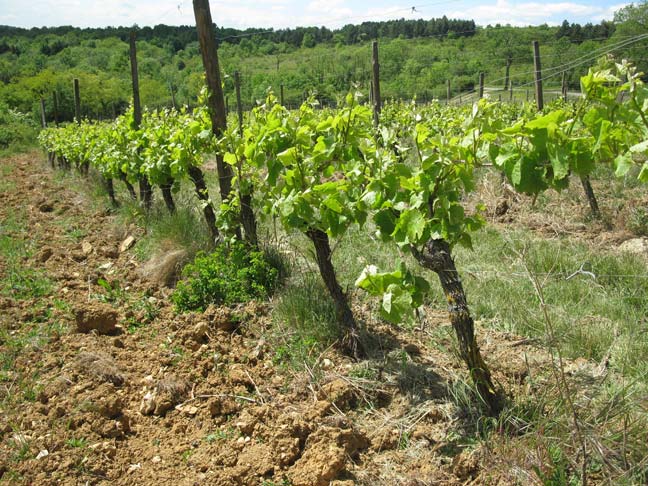Terroir is the set of all environmental factors that affect a crop's phenotype, unique environment contexts and farming practices, when the crop is grown in a specific habitat. Collectively, these contextual characteristics are said to have a character; terroir also refers to this character.
 Terroir is the basis of the French wine appellation d'origine contrôlée (AOC) system, which is a model for wine appellation and regulation in France and around the world. The AOC system presumes that the land from which the grapes are grown imparts a unique quality that is specific to that growing site (the plants' habitat). The extent of terroir's significance is debated in the wine industry.
Terroir is the basis of the French wine appellation d'origine contrôlée (AOC) system, which is a model for wine appellation and regulation in France and around the world. The AOC system presumes that the land from which the grapes are grown imparts a unique quality that is specific to that growing site (the plants' habitat). The extent of terroir's significance is debated in the wine industry.
While wine experts disagree about the exact definition, particular consideration is given to the natural elements that are beyond the control of humans. Components often described as aspects of terroir include:
- Climate
- Soil type
- Geomorphology
- Other plants growing in and around the vine plots
The interaction of climate and terroir is generally broken down from the macroclimate of a larger area (For example, the Côte de Nuits region of Burgundy), down to the mesoclimate of a smaller subsection of that region (such as the village of Vosne-Romanée) and even to the individual microclimate of a particular vineyard or row of grapevines (like the Grand Cru vineyard of La Grande Rue). The element of soil relates both to the composition and the intrinsic nature of the vineyard soils, such as fertility, drainage and ability to retain heat. Geomorphology refers to natural landscape features like mountains, valleys and bodies of water, which affect how the climate interacts with the region, and includes the elements of aspect and elevation of the vineyard location. (Source: Wikipedia)
